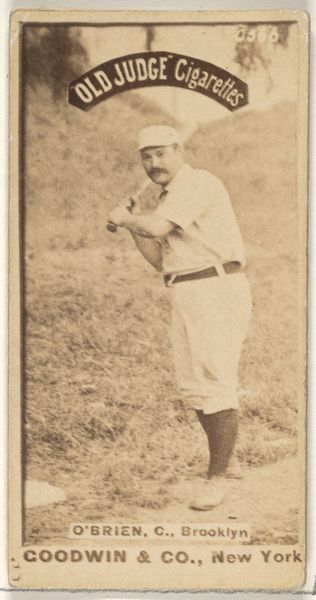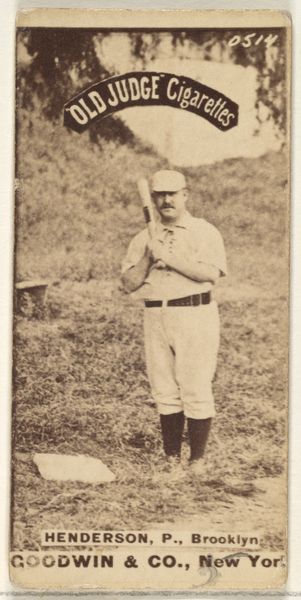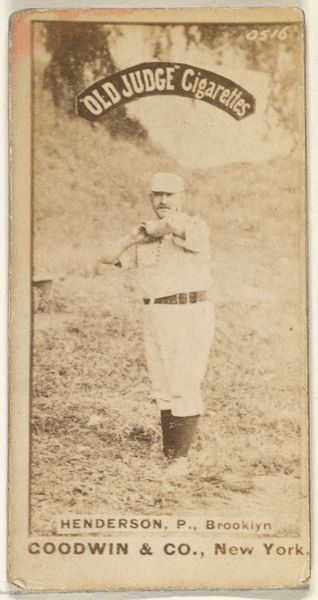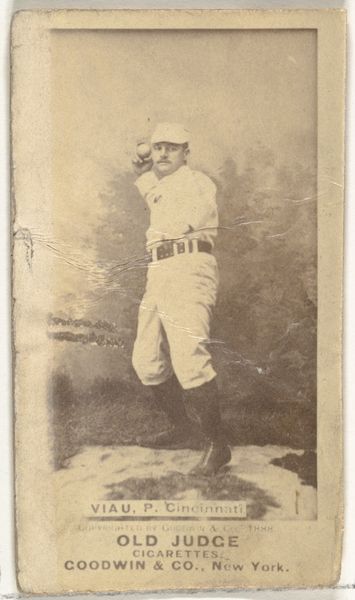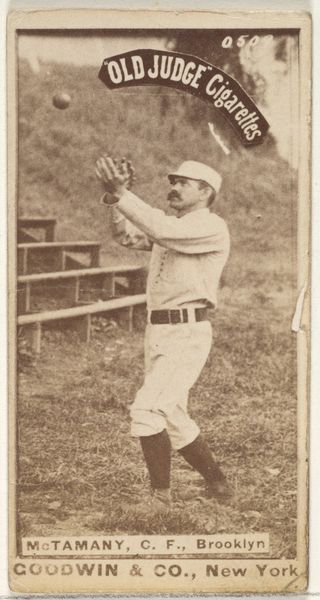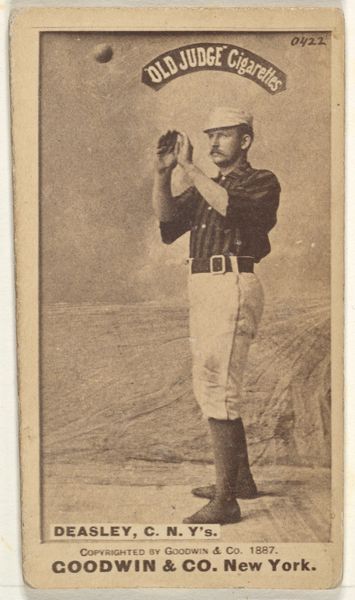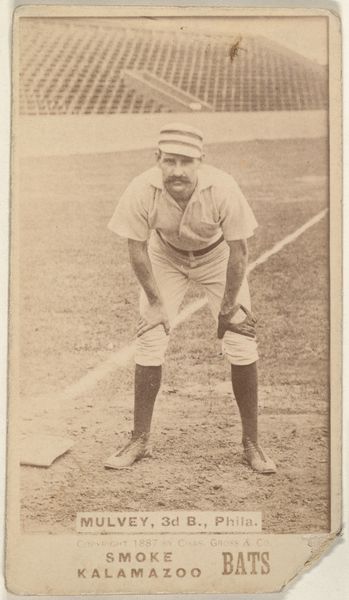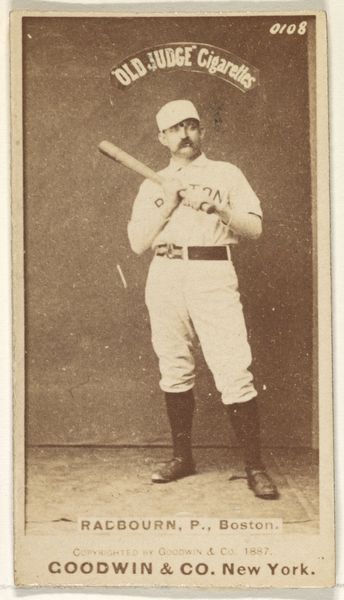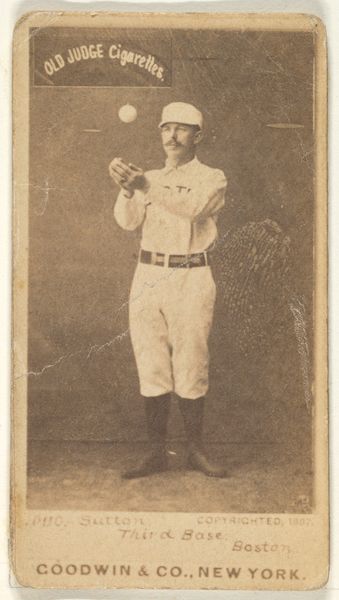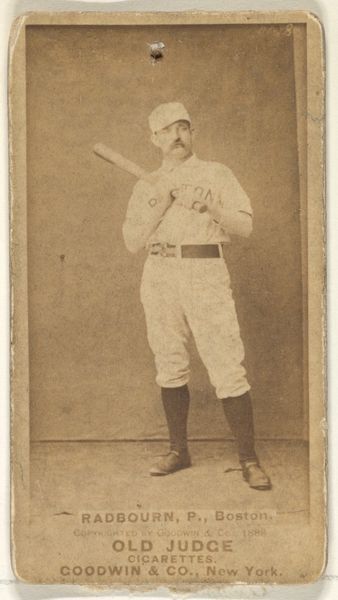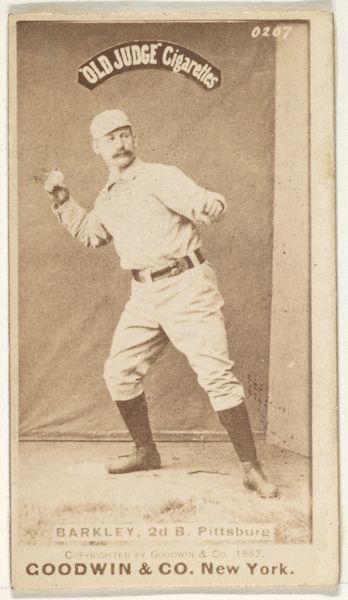
McTamany, Center Field, Brooklyn, from the Old Judge series (N172) for Old Judge Cigarettes 1887 - 1890
0:00
0:00
drawing, print, photography
#
portrait
#
drawing
#
still-life-photography
# print
#
impressionism
#
baseball
#
photography
#
historical photography
#
men
Dimensions: sheet: 2 11/16 x 1 3/8 in. (6.9 x 3.5 cm)
Copyright: Public Domain
Curator: It's fascinating to observe how these Old Judge cigarette cards, like this one of McTamany, a center fielder for Brooklyn, produced between 1887 and 1890, capture the burgeoning popularity of baseball alongside the aggressive marketing strategies of tobacco companies. Editor: There’s a stillness about this sepia print, isn't there? The sharp contrast seems to enhance the subject’s resolute expression and draws focus to the tools of his trade; the bat and ball sit prominently. The muted color creates a unique formal experience in viewing. Curator: Precisely. Consider the socio-economic implications: Goodwin & Company cleverly used these images, turning baseball players into early celebrities, thus fostering consumer loyalty amongst baseball fans who sought after these cards. Editor: The baseball player, he’s well postured. The picture plane is evenly split by the background behind, where the man in focus stands. But do you notice the blur in the background? What does it suggest about this still medium? Curator: What we're observing with that 'blur' you see, could have been strategic. Staged photographs were very typical for marketing endeavors, like these Old Judge Cigarettes; thus this ‘action shot’ likely took careful arrangement behind the camera. These staged portraits provided a controlled narrative, linking baseball's growing appeal to the consumption of cigarettes. It solidified a cultural connection in the making! Editor: That’s definitely the commercial tie-in; however, this medium created its own conventions, this smallness that would now only live behind glass in The Met, how does it transform in cultural memory? The size and color work really evoke nostalgia. Curator: Ultimately, cards like these give us insight into the complex relationship between commerce, sport, and visual culture in late 19th-century America. They acted as vehicles for establishing national pastimes and simultaneously advancing the economic goals of emerging industries. Editor: In a small but monumental work such as this, we see art historical currents swirling together: an image carefully put together, a unique arrangement of line and shade, and how we regard baseball history within a singular photograph. A very nice synthesis.
Comments
No comments
Be the first to comment and join the conversation on the ultimate creative platform.
